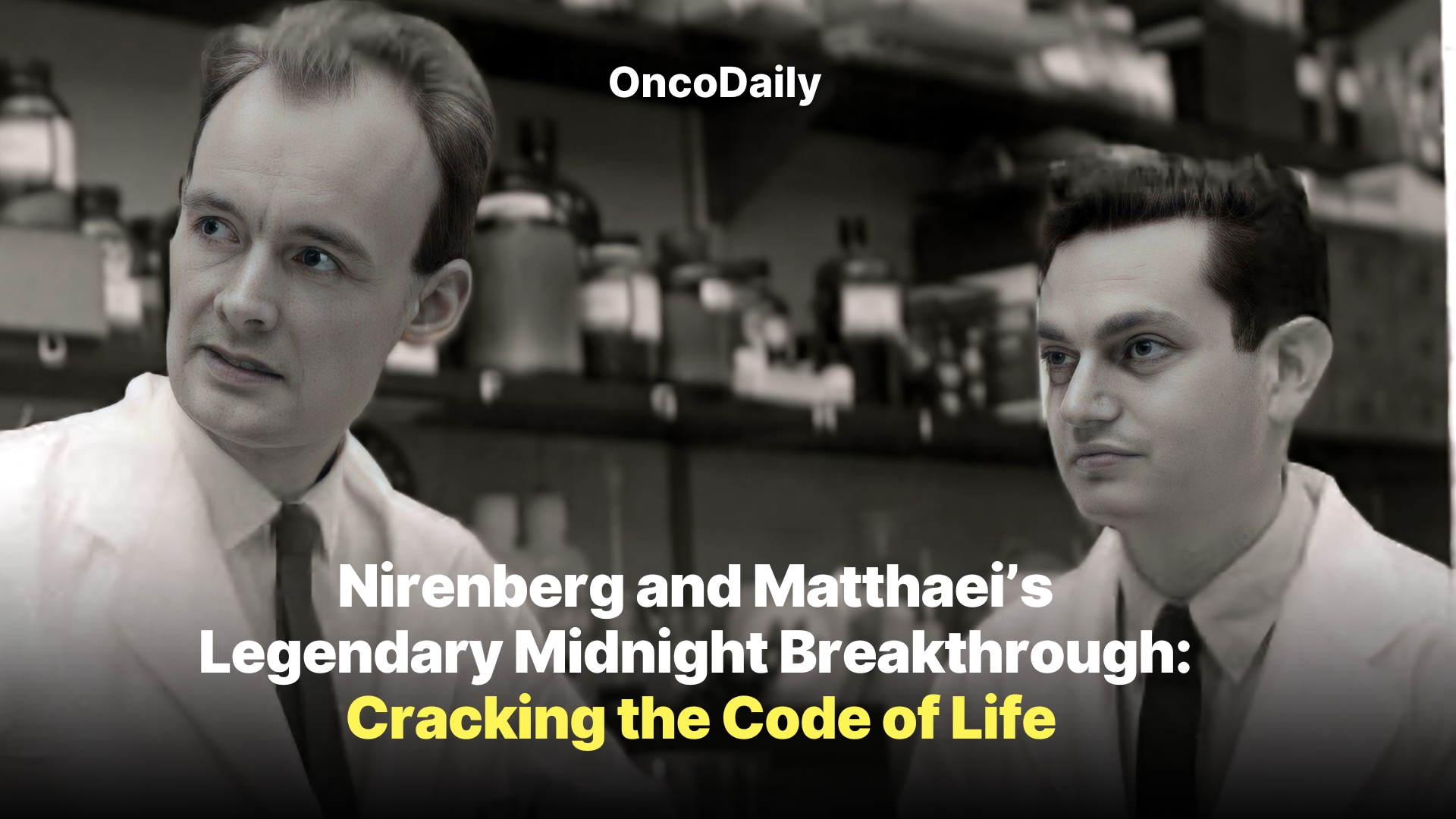In the quiet, pre-dawn hours of May 27, 1961, while most of the world slept, two young scientists at the National Institutes of Health were wide awake—and on the verge of rewriting biology. Marshall Nirenberg and postdoctoral fellow Heinrich Matthaei weren’t chasing fame or fortune. They were chasing understanding. What happened in that laboratory at 3:00 AM wasn’t just a routine experiment—it was the key that would unlock the language of life itself.
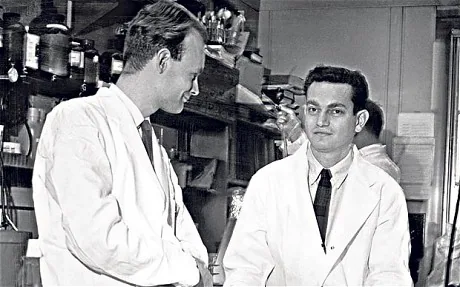
Marshall Nirenberg (right) and Heinrich Matthaei (left)
How Marshall Nirenberg’s Quiet Beginnings Led to a Monumental Breakthrough
It was a simple setup: a test tube, a cell-free mixture of E. coli enzymes, and a synthetic strand of RNA made entirely of one letter—uracil (U). Matthaei added the poly-U RNA to the solution and included all 20 amino acids, each placed in a separate test tube and tagged radioactively to track their activity.
Then, it happened. One test tube—just one—lit up. Phenylalanine. The synthetic RNA had spelled its first word: UUU.
Three uracils. One amino acid. A message had been decoded.
And with it, the first word of life’s alphabet had been read.
Nirenberg, overcome with emotion, recalled later, “I literally jumped for joy.”
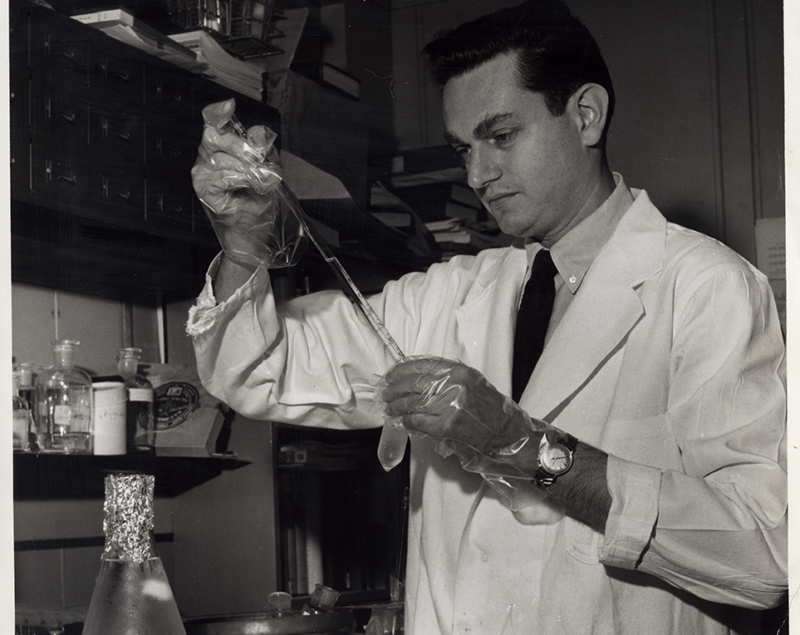
The Puzzle of the Genetic Code
Since the discovery of DNA’s double-helix structure in 1953, scientists knew that DNA carried genetic instructions. But how did four letters—A, T, C, and G—communicate the complex construction of life, including the assembly of 20 unique amino acids?
Theories abounded. Physicist George Gamow even created the whimsical “RNA Tie Club,” where each member represented an amino acid, hoping camaraderie could crack the code. The consensus was that three-letter combinations—codons—might be the solution. Mathematically, it made sense: four bases, taken three at a time, yield 64 possible codons—more than enough to code for 20 amino acids.
But math alone wasn’t enough. Someone had to prove it.
The Experiment That Changed Everything
Nirenberg’s brilliance lay in his simplicity. Rather than theorize, he brought biology to the bench. Using a bacterial extract that could still make proteins outside of the cell, he fed in synthetic RNA of a known sequence. When Matthaei added poly-U RNA to this “soup,” the result was clear and profound.
Only phenylalanine was produced. Repeatedly. Reliably. Decisively.
UUU = phenylalanine.
Their discovery confirmed that messenger RNA (mRNA) is the bridge between DNA and protein—carrying the genetic message to be translated by the cell’s machinery.
As the American Chemical Society later wrote, this was “molecular biology’s Rosetta Stone.”

Decoding the Remaining Words
News of the poly-U result ignited a scientific wildfire. The race to decode the rest of life’s language was on. Soon, poly-C (CCC) was shown to code for proline. Poly-A (AAA) for lysine. GUU for valine. Bit by bit, the full dictionary of life emerged.
By 1966, just five years after the midnight revelation, Nirenberg’s team had read the entire code: 64 codons, 20 amino acids, and several stop signals. Perhaps most remarkable was the code’s consistency—across bacteria, plants, animals, and humans, the genetic code remained nearly identical.
As Nirenberg reflected, “You can look at trees, flowers, squirrels—we can know that we’re all related.”
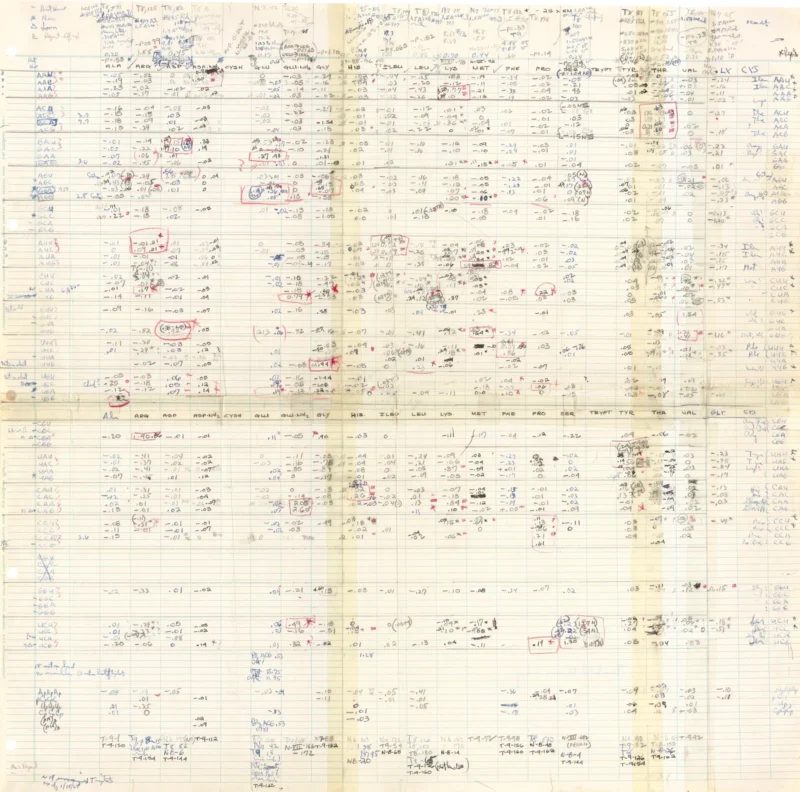
Nirenberg’s handwritten genetic code chart, 1965.
A Legacy Sealed with a Nobel Prize
In 1968, Marshall Nirenberg, Har Gobind Khorana, and Robert W. Holley were jointly awarded the Nobel Prize in Physiology or Medicine. Their collective work had cracked open the code of life. Khorana pioneered techniques to synthesize precise RNA sequences, speeding up the decoding process. Holley determined the structure of transfer RNA—the molecular adapter that translates codons into amino acids.
Together, they gave humanity the tools to read, interpret, and eventually edit its own genetic script.
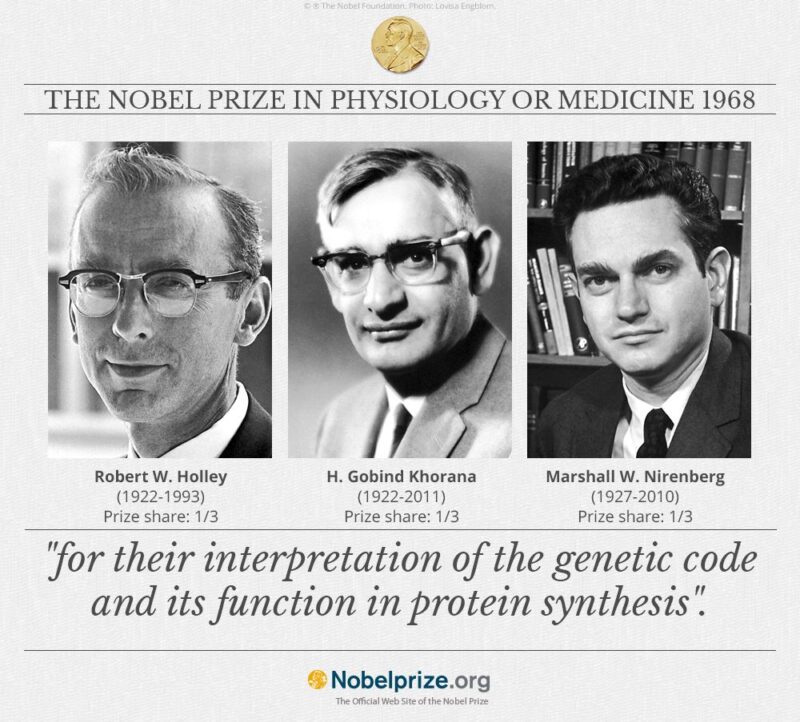
Why This Discovery Still Matters
The implications of Nirenberg and Matthaei’s experiment ripple through every corner of modern science. From gene therapy and synthetic biology to CRISPR and mRNA vaccines, the ability to read and write genetic code has transformed medicine and biotechnology.
More than a scientific triumph, their midnight success is a story of curiosity, courage, and clarity. It reminds us that sometimes, in the stillness of night, a bold idea and a careful experiment can change the world.
A Rosetta Stone for Life
The poly-U experiment wasn’t flashy. It didn’t involve massive machines or global teams. But in a humble lab, two young men cracked a code that nature had kept secret for billions of years.
Their legacy lives on in every genetic test, every gene-edited therapy, and every student who opens a biology textbook to study the standard genetic code table.
Fifty years later, the world still reads the message they uncovered:
Life speaks in a language of its own. And now, we understand it.
A Call to Curiosity and Discovery
The story of Nirenberg and Matthaei reminds us that some of the most profound breakthroughs can begin in the quiet hours, with a simple question and an open mind. Their midnight experiment helped decode the very language of life—and continues to inspire generations of scientists.
If stories like this spark your curiosity, and you want to stay close to the pulse of science, medicine, and innovation, follow OncoDaily. We share powerful journeys, scientific insights, and conversations that shape the future of healthcare—one discovery at a time.
Written by Md Foorquan Hashmi, MD, Sr. Editor, OncoDaily: India Bureau
